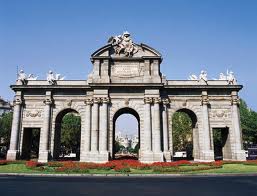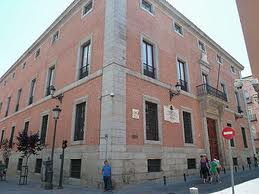Neoclassicist Architecture
With the death of the heirless King Ferdinand VI of Spain, the throne befell on the hands of Charles III, his half-brother and son to Philip V. Already king of the Two Sicilies, Charles was a seasoned politician with clear ideas about the lines he would pursue during his reign. Well immersed in the tide of the Enlightenment, Charles would import the latest form of Neoclassicism from Italy, in his effort to incorporate Spain into the XVIII century.
Madrid
Charles III is generally regarded as one of the greatest benefactors of the city of Madrid, together with, or followed closely by, Felipe III. Upon his arrival from Naples, Charles endeavored to expand, modernise and urbanise the capital of his kingdom, beginning with the main gate to the city: the Puerta de Alcalá.

One of the most emblematic symbols of the city in its modern incarnation, the Puerta de Alcalá was originally designed by Francesco Sabatini. Right on the outer edge of the old city, the gate is now almost at the centre of town, decorating with its two different facades both sides of the main artery into Madrid.
The product of a blending of two projects put forward simultaneously by Sabatini, the gate boasts different facades to the east and west, with five openings, the three central ones semicircular arches, and the two smaller outer ones with lintels. The central section is higher than the two sides, with a pediment crowning the structure from both sides. The western facade is decorated with pilasters, while the eastern side is equipped with fake columns.
Perhaps the most telling element of the gate, however, is the dual outlook of the pediment, above the gate. Outwardly the decoration would fit loosely within the precepts of Neoclassicism, with a triangular structure removed from the main body. However, the series of pilasters that project the pediment forward break the clean lines of the face of the gate, releasing some of the tension produced by the sharp angles.
The eastern side of the gate is even more evidently indebted to the Baroque tradition with a broken semicircular pediment sporting the coat of arms of the royal family held clumsily in the air by a winged and robed angel and a small cherub. Thus, the gate, with its two faces, places us metaphorically and literally, right at the heart of the transitional period, from an elaborate Baroque to a nascent classicism.
Along with Sabatini, whose style, we have seen, was mixed, Juan de Villanueva might be the single-most influential architect in the modern look of Madrid. As a matter of fact, almost every single visitor to the city will direct their steps in the direction of the Museum El Prado, likely the most emblematic building of Spanish Neoclassicism.

Built between 1785 and 1787 and originally intended as the Gabinete de Historia Natural (The Natural History Museum), the building was converted into the Museum El Prado in 1814. As a matter of fact, the museum is often referred to as the edificio Villanueva (The Villanueva Building), even though the area is mined with structures designed by the architect: there is the Observatory just next to the museum, the Botanical Gardens, adjacent to the Buen Retiro, as well as the Royal Academy of History.
Another name that cannot be omitted in the list of benefactors of the city of Madrid during the development of Spanish Neoclassicism is Buenaventura Rodríguez. An architect by trade, his work can be found all over the country, both in secular and religious context. Nevertheless, in terms of his legacy in the capital, it is as a sculptor that Rodriguez has carved his name.
The designer of three monumental complexes, Ventura Rodriguez's work can be appreciated simply by taking a stroll from the Museum El Prado to the Puerta de Alcalá. There you will come across the beautiful fountain of Neptune, first, before stumbling upon the fountain of the Four Seasons (also called of Apollo) before reaching the emblematic fountain of Cibeles, the heart and soul of the city.
